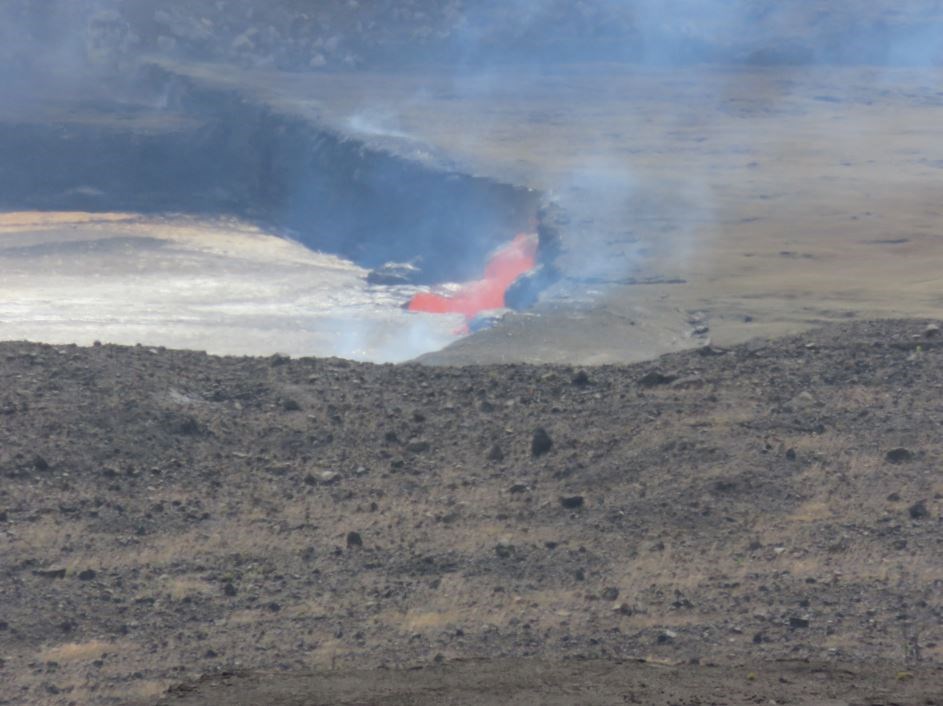Depending on her mood, Pele, the Hawaiian goddess of fire, wind and lightening, goes by several nicknames.
When erupting from a volcano in a rage, Pele is known as Kawahineokalua, woman of the pit. Flowing through a forest, she’s called Kawahine‘aihonua, eater of the land. And finally, because she also forged the foundation for what’s now called the Island of Hawaii, the youngest of the Hawaiian Islands, she’s known as Pelehonuamea or Pele, creator of the land.
Hiking along the Kilauea Iki Trail meandering through Hawaii Volcanoes National Park during a recent visit to the Island of Hawaii, I spotted thin brown strands of an unrecognizable material caught up in many of the bushes and trees we passed. Our guide from Hawaii Outdoor Guides explained the threads are made from volcanic glass, thought to be strands of Pele’s hair.
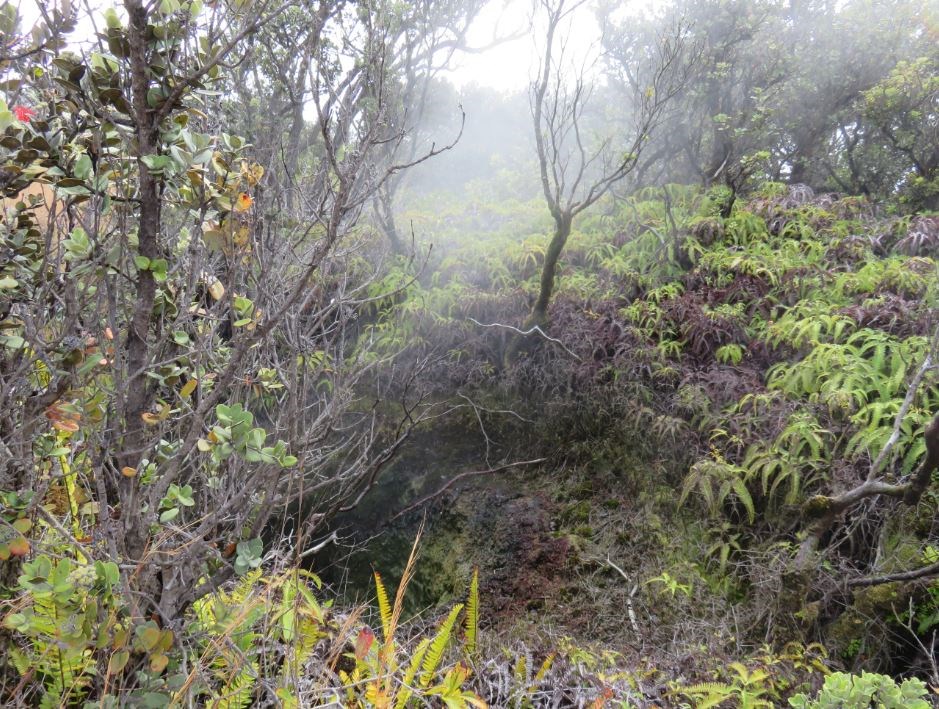
As we continued walking the Kilauea Iki Crater Trail, it wasn’t until we came to a spot with steam visibly rising from the ground that it finally sunk in — we were actually standing on the slope of an active volcano.
These sulphur-spewing, volcanic steam vents dot the trails around the Kilauea Iki Crater, located in the heart of the park. And even though I was aware Kilauea is the most active volcano in the world, erupting continuously since 1983, there’s a huge difference between reading about it and actually seeing it in action.
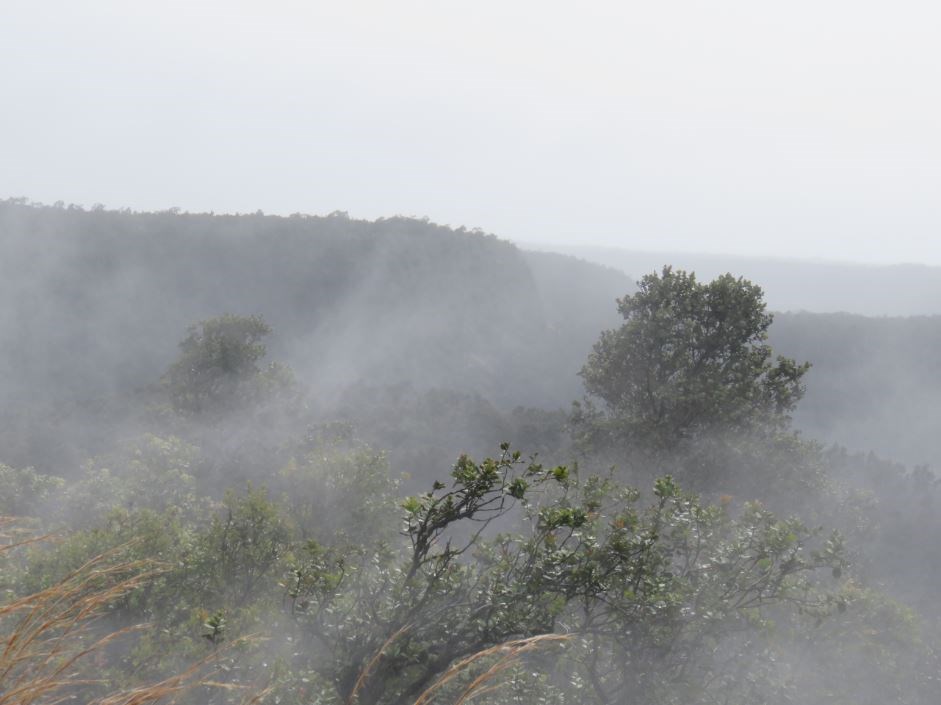
Our tour with Hawaii Outdoor Guides had begun much earlier in the day, when our guide picked us up at Fifth Street Ohana, a charming bed and breakfast surrounded by jungle where we stayed for two nights. Well prepared, our guide brought along cookies, water and most importantly, umbrellas. Did I mention it rains almost continuously on that side of the Island of Hawaii? Truth be told, it’s more like a warm mist, but it’s constant.
We started our day at the National Park Visitor Center, where we read about the devastation of nearly 30 years of volcanic eruptions and saw the timeline of the volcano’s history. I recommend starting any tour of Volcanoes National Park and surrounding attractions as early as possible because they’re popular spots for tourists and tour buses — and rightly so — a live volcano is not something you get to see every day.
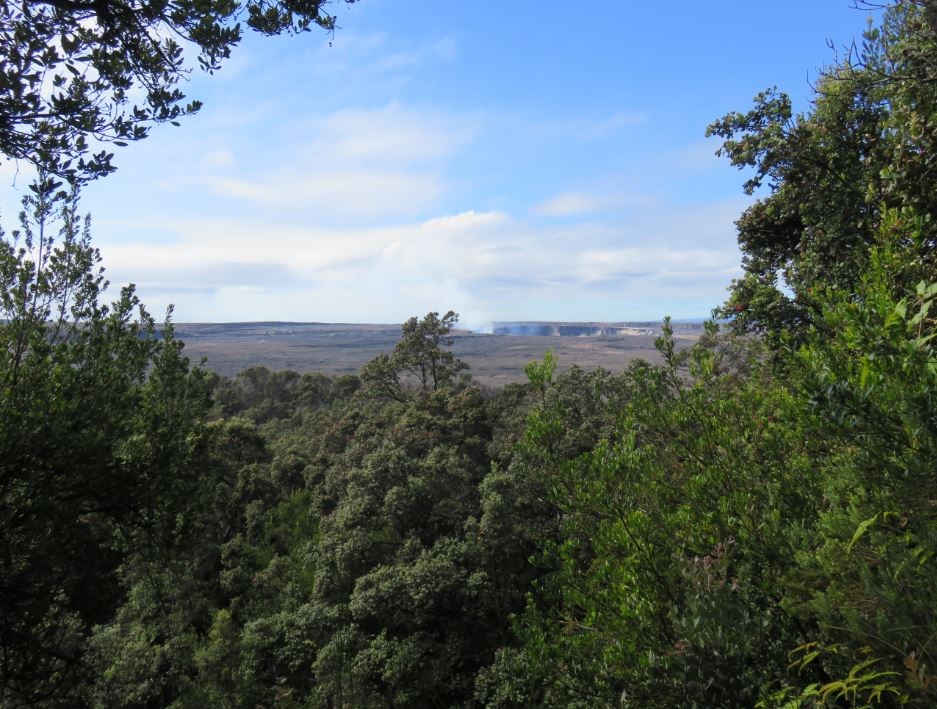
After completing our hike, including a stop at the Halema’uma’u Crater overlook, our guide took us to the Jaggar Museum located within the park where we were able to watch red-hot lava bubbling up and over the side of the crater. Strategically placed telescopes allow visitors to see the lava up close. Not only is the site impressive, it’s also a reminder of just how fragile life could be should Pele choose to vent her wrath once again. It was in 1959, when Pele last flew into a rage and shattered the quiet of the island with an eruption that began when a curtain of lava burst from an 808-metres-long fissure in the crater wall. During the next five weeks, lava spewed from vents 17 more times. Three days before the eruption ended, lava surged as high as 580 metres above the vent — the highest fountain ever recorded in Hawaii.
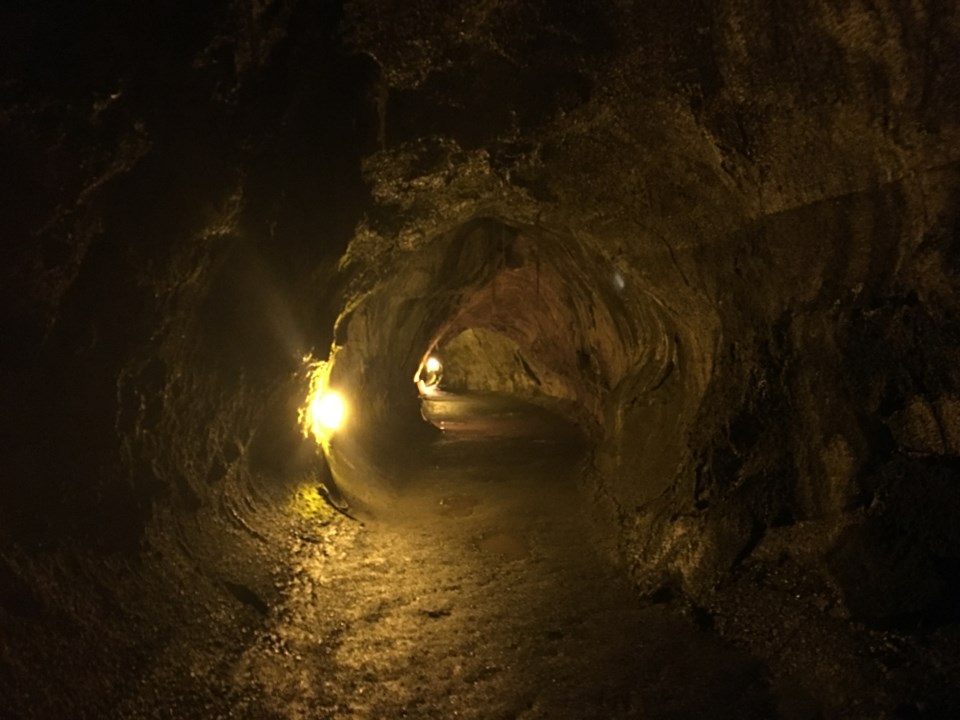
We left the Jaggar Museum and headed to the Thurston Lava Tube, a 500-year old cave located within the national park. It’s one of many caves formed when rivers of lava from Kilauea Iki gradually built solid walls and a ceiling. The caves were created when the lava flow stopped and the last of it passed downhill. The section of the Thurston Lava Tube we explored is tall enough in the middle to walk through comfortably, is illuminated and has a flat rock bottom, making it accessible to most tourists.
As we emerged from the dimly lit cave, we were greeted by an unexpected glimpse of the sun as we headed back Fifth Street Ohana.
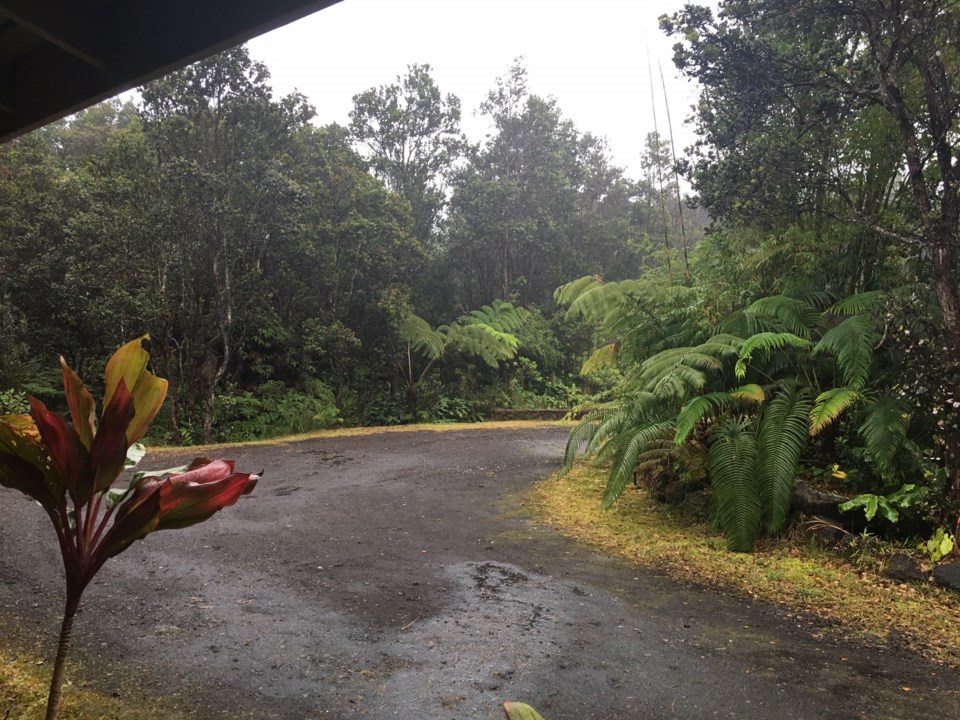
After several days staying in hotels and eating in restaurants, it was great to retreat to our little cottage in the jungle, which came complete with a full kitchen and laundry (Yeah!). The day before, we shopped in nearby Hilo, just a short drive down the highway, and stocked up on enough groceries for two days — and enough wine for a week. (Even paying the exchange on our Canadian dollar, liquor is still a bargain in Hawaii.)
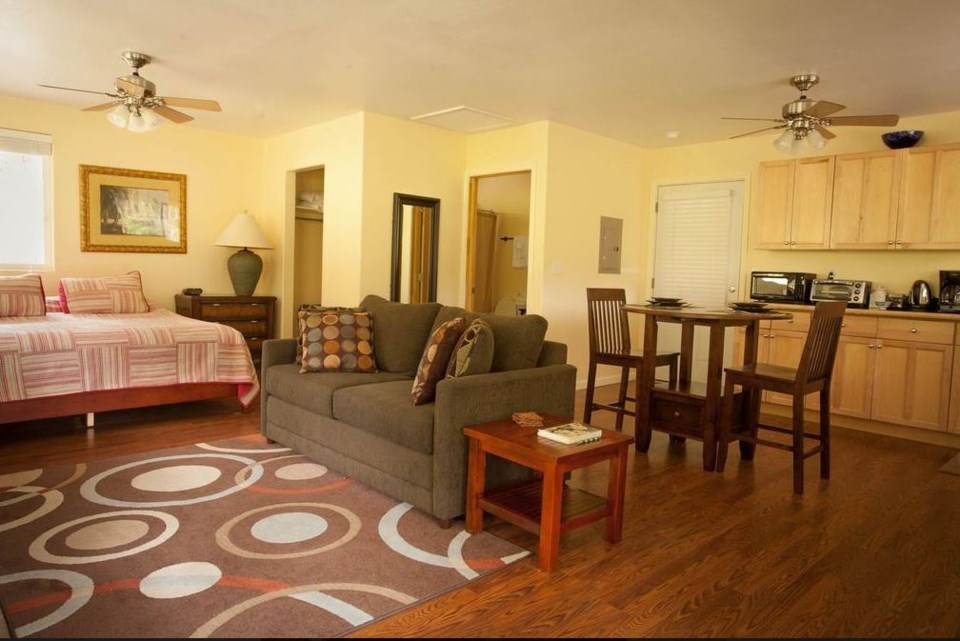
After washing off the sweat and grime from the day, we settled onto the lanai of our home-away-from-home with a glass of wine, marvelling at the massive rainbow colouring the sky, and we knew for at least that moment, Pele was in a very good mood.
@sthomas10
